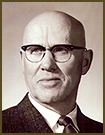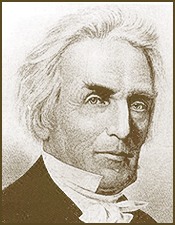
CCDC History
The Church of Christ Development Company Ltd. (CCDC) had its beginnings in the 1950s. Until that time, Canadian churches of the Stone-Campbell movement had employed the loan fund of the American Board of Church Extension. The Canadian churches were encountering problems due to government regulations, so they met at the Canadian Disciples Planning Conference in 1956 to seek to establish an organization in Canada that could meet the needs of Canadian churches more effectively. Out of this conference, the Church of Christ Development Company Ltd. was established and registered on October 16, 1957, in the province of Alberta.
The Founding Directors were:
- Dr. Marcus Dunsworth (President)
- John Bergman (Secretary – Treasurer)
- Carl Stainton, Landon Bailey, William Murray, Lorne Pearson
The fund began with a director’s loan of approximately four thousand dollars. Since church loans were hard to secure and often were not recoverable, it was established that half the fund should be invested in non-church securities. This principle proved to be invaluable in protecting investors through difficult economic times while providing long-term stability to congregations for borrowing.

John Bergman’s ideas contributed to the inception of CCDC, and he guided the company for most of his life
During the summer of 1958, the Company began its first funding: the building of Wyndholme Christian Church and parsonage in Dartmouth, NS. In those early days, the task of securing funds from investors was a difficult one, but by the end of that first year, Wyndholme Christian Church was standing with the aid of the Church of Christ Development Company’s first loan, and the Company’s assets stood at $23,000. The loan to Wyndholme was taken over by the Board of Church Extension, and the CCDC continued to provide interim financing over the next several years by supporting these churches:
- Parkland Christian Church in Red Deer, AB
- Community Christian Church in Vancouver, BC
- The Maritime Christian Missionary Society, South Range, NS

Dr. Marcus Dunsworth was the first President of CCDC
By 1961, the CCDC went on to provide financing for Tuxedo Park Christian Church in Calgary as it relocated and became Cambrian Heights Christian Church. In 1962, when Alberta Bible College moved to a site beside Cambrian Christian Church, the Company was in a more secure position and could offer its first long-term financing. Five other congregations received financing in the 1960s: Selkirk, ON; Hardieville, AB; Great Bend, AB; Grande Prairie, AB; and Central Church of Christ, AB, which became First Christian Church.
In 1966, the board of directors changed. Dr. Brian Dunsworth replaced his father, who had recently passed away, while John Bergman became President and Catherine Brownlee was elected as Secretary-Treasurer.
Church growth was not as rapid in the 1970s as it was in the previous decade. The CCDC, however, continued to grow as loans were repaid and people donated to and invested in the company. By God’s provision, in 1972 the total assets had reached one million dollars. There were 16 new loans to congregations and organizations, but only four were for new congregations (Glenmore, AB; Brock Road, ON; Sackville, NS; and Winnipeg, MB).

Carl Leviston served as a lawyer for CCDC for over 40 years. His benevolence made possible the development of many churches across Canada
Loan sizes began to grow in the 1980s, and in the 1990s the Company made loans to 10 more congregations in an amount that totaled more than $1,400,000. In the early 1990s, the CCDC assisted Maritime Christian College in Charlottetown in acquiring a new facility. This was followed by involvement in the financing of a new facility for Bow Valley Christian Church, formerly Cambrian Heights Christian Church.
On January 30, 2000, after preaching at First Christian Church, the Lord called John Bergman home. By God’s blessing, total assets at that time were close to 20 million dollars.

Catherine Brownlee was instrumental in CCDC leadership serving as Secretary-Treasurer from 1966-2006. Her dedicated service was a constant strength
Designated Gift Funds (formerly Named Funds) are a source of income. The first DGF was presented on the steps of Hillcrest Christian Church in Toronto in 1957. Today, these funds represent over twelve million dollars of the company’s capital. These funds do not pay a return to the donor, but the donor can specify his or her intention to either have the fund increase annually by sharing in the capital growth of the company or to have the interest on the fund paid out to a charitable recipient of their choice.
Catherine Bergman became Managing Director after John Bergman’s death in 2000 and served as General Manager for the company until 2012.
In 2001, after years of uncertainty regarding the company’s charitable designation with Canada Customs and Revenue, CCDC was finally recognized as a non-profit organization. This enabled the organization to devote much more of our funds and resources to church building and development. The CCDC is very grateful to all the congregations, organizations, and individuals of the Christian Churches and Churches of Christ whose support and prayers have made a tremendous difference through this time.
In 1999, Mill Village Church of Christ in Nova Scotia took the first a cappella loan from the Company. Today, one third of the CCDC’s loans are made to a cappella churches located across Canada.
With the goal of spreading the gospel message, the Church of Christ Development Company Ltd. looks forward to having many more new and exciting opportunities for church building and development in Canada.
Restoration History

The family of Churches known as Christian Churches, Churches of Christ, and Disciples of Christ began in the early 1800s in both the United Kingdom and the United States. During this period in history, the Church tended to be legalistic and seriously divided. The Restoration Movement began as groups of Christians became increasingly convicted about the desperate need for unity in Christ’s church. They felt that only a thorough reformation of the Church would bring the followers of Christ closer to the unity that they sought, and from that conviction a new movement of “New Testament Church” was born.

The portion of the movement that occurred in the United States was led by two men we remember in particular; Barton W. Stone and Alexander Campbell. Stone and Campbell worked separately for revival of a new unified church from the turn of the 19th century until 1824 when they met.
By the 1840s, there were also churches in Canada, Australia, and New Zealand. That century was a time of extreme growth for the movement, and by it’s close, the Christian Church was the fifth largest in the United States.
An evangelist named Walter Scott also made a significant contribution to the Christian Church by defining five basic emphases by which people could come to Christ and membership in His Church. His “five finger exercise”; faith, repentance, baptism, the remission of sins and the gift of the Holy Spirit, helped to further define and clarify the essence of this new body of believers.
Despite the phenomenal growth and push for unity, by 1906 the group currently known as Churches of Christ (a cappella) had already become distinct from the main body, although there has recently been more action taken among those congregations to embrace the body as a whole again. From the 1920s to 1960s, further division occurred resulting in two other entities; the more liberal and ecumenical group, and the more conservative and independent group.
The founding members of the Restoration Movement dreamed of a Church that was “essentially, intentionally and constitutionally one”. To see the Church “united in essentials, tolerant in non-essentials and loving in all things” is still our mandate today.